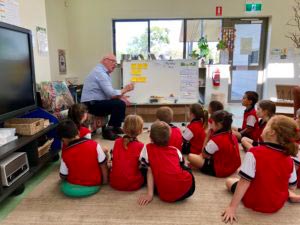
This is the fourth and final blog post about my talk at ResearchEd Auckland. The earlier ones are here, here and here.
Learning, as we always tell teachers on our phonics training courses, is uneven and is punctuated by sudden improvements, long plateaus, and/or periods of regression. That’s what learning looks like. It’s messy!
To continue to make improvements in any domain, you need to devote time to deliberate practice, which is, as John Hattie says, mindful, sequential and highly structured*.
Of course, you also need expert tuition and goal setting. In his book Visible Learning and the Science of How We Learn, John Hattie emphasises the importance of teacher knowledge. In the domain of teaching young children to read and write, teacher knowledge is often very poor indeed because training institutions very often neglect to teach their trainee teachers the rudiments of linguistic theory or, indeed, how humans learn most effectively.
In the beginning of teaching reading and spelling at least, the focus should be on short-term, immediate goals, where the teacher concentrates attention on critical aspects, helps to refine technical skills, provides time and space for repetition, and offers corrective feedback where necessary.
Skills, in particular, are refined with practice. The more you practise an activity, the more able you are to switch from a conscious to an automatic function. Automation frees working memory capacity for other activities because a schema that has been made automatic acts as a central executive that directs activity without the need for processing in working memory: you are able to do it without even thinking about it. It dips under the level of conscious attention, which is why when fluent readers are reading, they are generally oblivious of the process that is taking place. As Jane Ashby put it, ‘skilled readers are rarely conscious of coordinating the cognitive processes involved in reading’**.
So, our problem as teachers of reading and spelling is one of how to present the information necessary for young children in such a way as not to overload working memory. What the child is learning must be cumulative and it must include all the elements necessary to learn to read and write efficiently. We also want to enable the successful transfer of information to long-term memory, where information is organised and structured.
To help young children learn, we need to constrain the amount of new information we present them with. In essence, this is one of the basic tenets of cognitive load theory. As Hattie says, ‘Novices need to concentrate as deeply as they can on specific ideas without encumbrance from other sources’. In other words, we need to take things a step at a time and do our best not to distract learners with extraneous activities that have nothing to do with the task at hand.
Hattie describes working memory as ‘the workbench of the conscious mind’ and as a ‘bottleneck to our ability to learn’. In fact, Sweller, Geary, Kirschner and many others regard learning as a change in the structure of long-term memory: if it hasn’t gone into long-term memory, it hasn’t been learnt!
How can we as phonics practitioners facilitate this transfer of information into the long-term memories of young children? The answer is simple: we create a schema in which the material we want young children to learn from the start is limited, chunked, which is to say, grouped, sorted, organised and classified. In short, a taxonomy of sounds and spellings that is organised from simple to more complex. For this reason, we need to introduce a limited amount of information at any one time and to recycle information that has already been committed to long-term memory.
How we do this is by presenting simple information in cumulative steps in the form of a limited number of ‘templates’ or lessons that are unchanging. If the way in which lessons are presented is unchanging and providing that they are an effective means of conveying what it is we want to teach, once established and practised, cognitive load is reduced to input and rehearsal of the new material.
If done properly, the learner can now devote all their attention to intrinsic cognitive load or what the learner needs to learn to achieve the desired outcome. At the same time, all the extraneous material that intrinsic cognitive load comes wrapped up in is reduced to a minimum.
That said, we should never lose sight of our fundamental threshold concept: the writing system is a code for the sounds in our speech. We need to ground our teaching in the sounds of the language and teach young children that letters are symbols for sounds in the English language.
Teaching the code knowledge, the skills and the conceptual understanding necessary to becoming a highly proficient reader and writer through a sound to print approach would destroy, as the head of one school in the UK put it to me, the long tail of poor literacy and illiteracy within every school and in a very short period of time. Just over a year in this head’s school.
*Hattie, J, (2014), Visible Learning and the Science of How We Learn, Routledge, p. 96
** Ashby, J., ‘Literacy Development: Insights from Research on Skilled Reading’ in Dickinson, D.K. and Neuman, S., (2006), Handbook of Early Literacy Research, Vol 2, p. 52